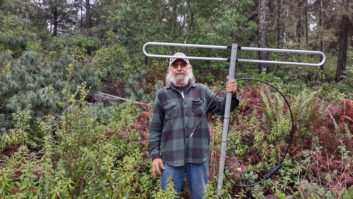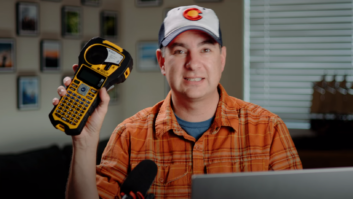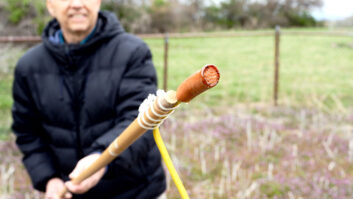Randy Hall’s YouTube video featuring an in-depth tour of the WLW(AM) facilities has garnered a great deal of interest. The WLW facility, at its peak, output 500 kW, which covered around half of the continental United States. This is not his first radio info video and is merely another addition to his large collection of videos that would be of interest to broadcast engineers. Randy provided a few minutes of his time to answer some questions.
The WLW video looks like it took a lot of effort and time. Tell us about it.
I first visited the WLW site during my 2010 trip to the Dayton Hamvention. I have lots of friends in broadcasting and through them I was invited to visit the WLW transmitter facility. I had my camera with me and shot lots of video, but I never did anything with it. However, I knew it was a good story. I planned to returned to Dayton for the hamfest again this year and I contacted Geoff [Mendenhall] and Jay [Adrick] to see if there was to be another WLW tour. There was, and I had my camera and wireless mic with me for the tour. I placed the mic on either Jay or Geoff and started shooting. They both have tremendous knowledge about the history of WLW and the 500 kW transmission facility. The following night I went to a BBQ hosted by Geoff and Jay. They had just received many high quality scans of old WLW photographs. I left with a memory stick full of photos and ideas for the video.
Did you work with Geoff and Jay in creating the video?
We did not organize anything at that time for the video. At the tour itself Geoff and Jay talked and I shot them along with lots of B roll insert material. I shot a lot of footage of them talking about the four existing 50 kW and the 500 kW transmitters. The WLW story is really interesting. Just think of all the hardware and engineering that was required in 1930 to achieve 10 dB, amazing. I am surprised at the number of views and the comments being posted from all over the world. That transmitter must have been an amazing living, breathing, snapping machine … My original cut was too long so I cut out all the 50 kW footage and worked just on the 500 kW story … I will be releasing a second video of the four 50 kWs soon.
Your YouTube page has quite a collection of videos on it. Some are historical and could be of popular interest but a lot are more technical — how-tos and product demos. What prompted you to become a font of radio information?
I have been an amateur radio operator since 1968 [k7age]. I got involved with television broadcasting as a cameraman for local sporting events while in high school. I studied electronics at Rochester Institute of Technology and worked for several years in their TV studio. After graduation I started working for Grass Valley Group as a field engineer and then other engineer positions during my 22 years at the group. I am now working for Miranda with their NVISION line of routing switchers. I have been involved with television broadcasting for most of my life.
So you had the video side down but how did you get to the radio side?
Six years ago I started playing around videoing me operating my ham radio station and posting videos on YouTube, which was then one year old. Back then the idea of posting videos for anyone in the world to watch for free was groundbreaking. I was amazed that other hams found my videos, were watching and posting comments. I then made a video about getting on PSK31, a HF digital mode that uses free software and the soundcard built into computers. The number of video views really took off. I have found that my viewers really like watching the how-to videos. My PSK video series now has over 420,000 total views. I think thousands of hams have gotten on the air using PSK from watching my videos. Now with after six years on YouTube I have over 100 videos, 8,500 subscribers and 2,500,000 total views.











